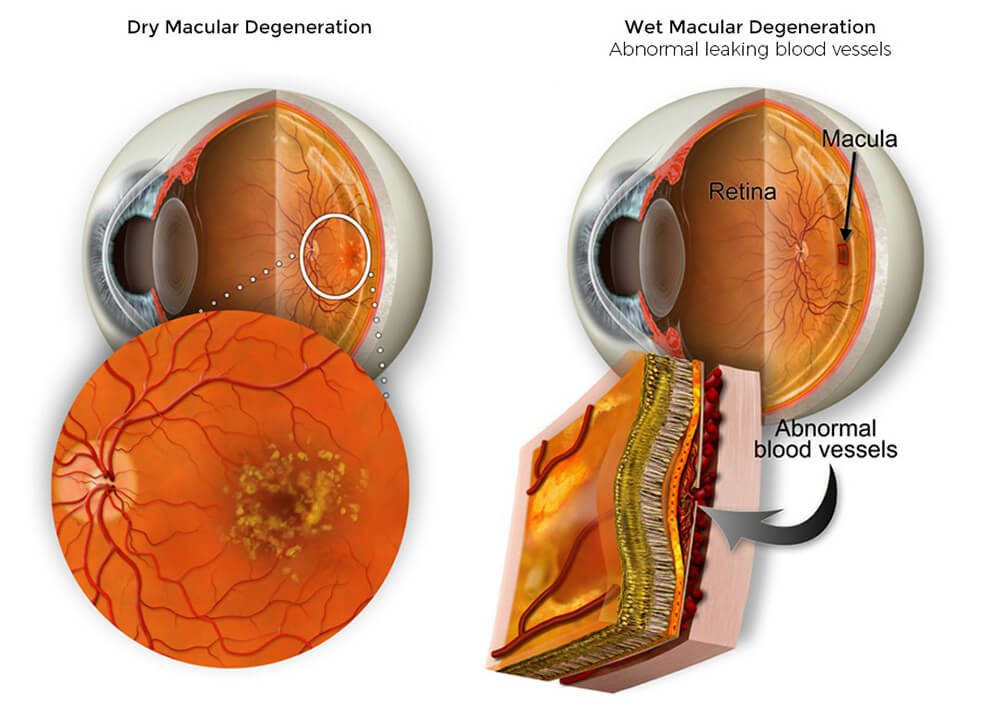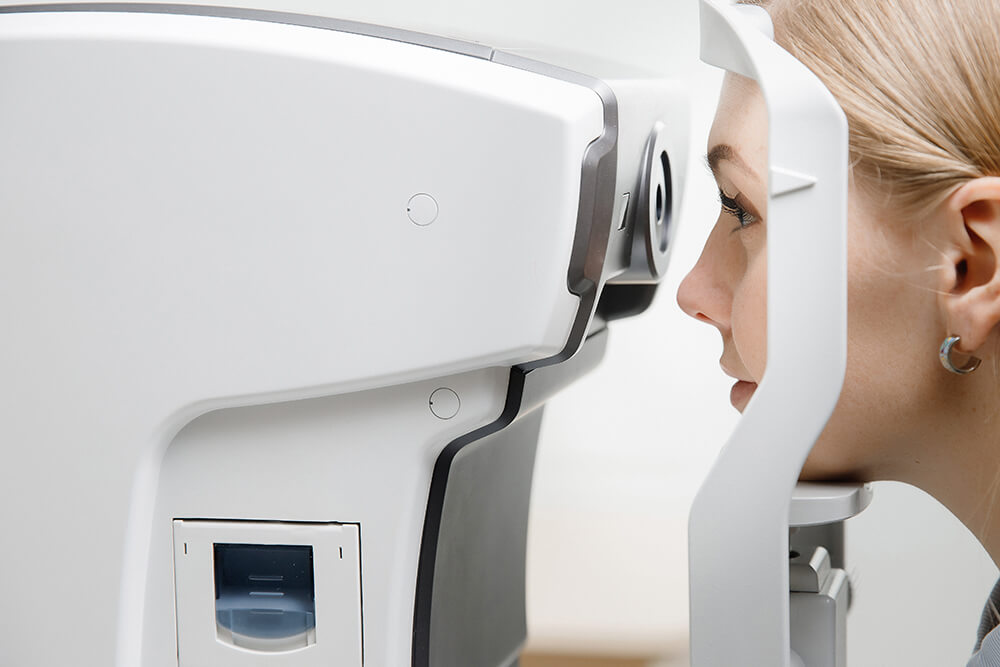
What is Age related macular degeneration (ARMD)?
Age related macular degeneration (ARMD) is the commonest cause of blindness in the Western world in those over 50 years of age. The damage in ARMD as the name suggests principally occurs as a result of wear and tear in the macula.
A person with macular degeneration loses the ability to see fine detail centrally for near and far, however it is important to realize that the patient does not become completely blind and the peripheral vision remains preserved.
There are two types of ARMD: a ‘dry’ type and a ‘wet’ type.

The dry type results from the gradual breakdown of light sensitive cells in the macula area, resulting in a gradual blurring of central vision. Dry ARMD is present in the majority (85-90%) of patients with macular degeneration. Patients with the early stage of dry ARMD may be unaware that these changes are present in the macula area and may have normal vision.
In a minority of cases, these early dry changes can progress and cause significant visual loss.
Fortunately dry ARMD is not as aggressive as wet ARMD, although currently there is no effective treatment to halt or reverse these dry changes.
Dry ARMD can change and become the wet form. Wet macular degeneration affects only about 10- 15% of people who have ARMD but it accounts for two-thirds of the people who have significant visual loss.
Prognosis
Early diagnosis is key to starting a treatment as soon as possible. If it is not treated quickly, the prognosis can be poor.
Symptoms of macular degeneration
Macular degeneration does not cause pain, but may present a number of visual symptoms that the patient should recognise:
- Straight lines that may appear wavy or broken
- Distance and height estimation alteration
- Increased sensitivity to light
- Needing more light to read
- Blurred vision
When the disease is in a more advanced stage, a black spot can be seen in the central area of vision, which gets darker as the condition progresses. The list of these symptoms are not exhaustive and if you are concerned you must consult a healthcare professional
Medical tests for macular degeneration
- Visual acuity test
- Ophthalmologic examination , paying special attention to the condition of the macula
- Optical coherence tomography : It is a scan of the macula, which aims to show the presence or absence of a neovascular membrane.

What causes macular degeneration?
Macular degeneration is related to ageing. Although age-related macular degeneration can occur in middle-aged people, studies indicate that people over the age of 60 are at a higher risk.
Other risk factors include:
- Smoking
- Obesity
- Family history: People with directly related family members who have age-related macular degeneration are at increased risk of developing this disease.
- Gender: More women develop AMD than men.
Can macular degeneration be prevented?
Whilst it cannot be prevented, once it is diagnosed, it is important to regularly and closely monitor these patients so that its progress can be observed and treatment applied.
Treatments for macular degeneration
Although there is no definitive treatment to repair the effects of age-related macular degeneration, early diagnosis is important to slow its progression. It has also been shown that consumption of antioxidant vitamins and zinc may contribute to the reduction of advanced macular degeneration (dry macular degeneration) and associated vision loss.
The main treatment available for wet macular degeneration is Injections into the eye with new medications, such as vascular endothelial growth factor antagonist therapy (VEGF). Typically patients require injections every four to six weeks until the blood vessels and leakage are brought under control. Maintenance injections may also be needed at different intervals. The goal is to optimize vision and control leakage. Patient response can be quite variable so that some patients may only require two or three injections over a two year period to control their Wet AMD, while others require monthly injections to adequately control the leakage and maintain their vision.